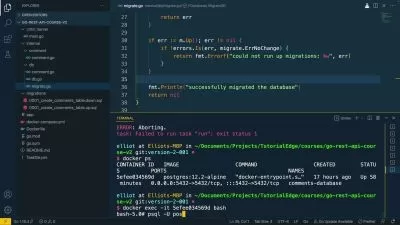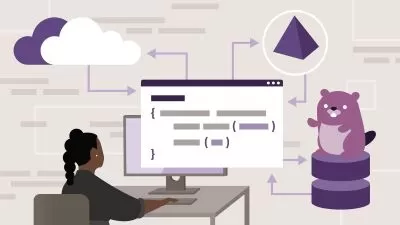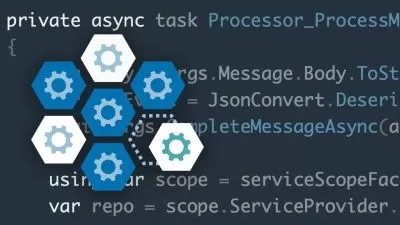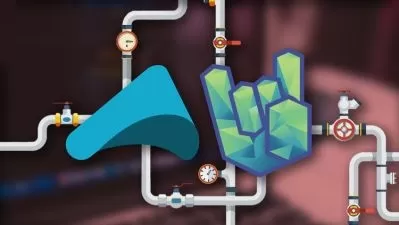How to design & develop REST microservices in Golang (Go)
Federico León
20:39:41
Description
All you need to integrate SQL & NoSQL databases, search engines and all the tools that you need in your REST API.
What You'll Learn?
- How to structure and organize your microservice.
- Domain Driven Development.
- Hexagonal architecture applied.
- MySQL integration and configuration.
- Integrate Cassandra DB in your microservices.
- Elasticsearch integration and configuration.
- Logging to standard output and log files.
- DAO pattern implementation.
- How to build, publish and use a custom Go library.
- Testing all the layers of your application.
- How dependencies work in Go.
Who is this for?
What You Need to Know?
More details
DescriptionWelcome!
In this second part of the series I'm working with MySQL, Cassandra and Elasticsearch as persistence layers and we're going to create 3 different microservices using different design patterns:Â MVC, featured MVC and Domain Driven Development implementing the Hexagonal architecture.
At the end of the course you'll learn:
How to structure our application's packages and code.
MVC pattern, Domain Driven Development and Hexagonal Architecture applied!
How to configure MySQLÂ client in Go. DAOÂ pattern implemented.
How to configure and use CassandraDB client in Go.
How to configure and use Elasticsearch in Go.
Testing and mocking database integrations.
Stress test the microservice with goroutines.
How dependencies work in Go. Usage of Go modules.
How to build, publish, use and share a custom Go library.
Application design patterns.
Preparing our distributed logging system.
Real life examples and exercises.
I'm sure you're going to enjoy this course! if you have any doubts, please check the reviews on my other courses so you can get an idea about what you're about to get. This is real life and industry experience!
Hope to hear from you!
Fede.
Who this course is for:
- Software engineers.
- Software developers.
- Technical leaders.
- Architects.
- Anyone who wants to get serious about microservices in Go.
Welcome!
In this second part of the series I'm working with MySQL, Cassandra and Elasticsearch as persistence layers and we're going to create 3 different microservices using different design patterns:Â MVC, featured MVC and Domain Driven Development implementing the Hexagonal architecture.
At the end of the course you'll learn:
How to structure our application's packages and code.
MVC pattern, Domain Driven Development and Hexagonal Architecture applied!
How to configure MySQLÂ client in Go. DAOÂ pattern implemented.
How to configure and use CassandraDB client in Go.
How to configure and use Elasticsearch in Go.
Testing and mocking database integrations.
Stress test the microservice with goroutines.
How dependencies work in Go. Usage of Go modules.
How to build, publish, use and share a custom Go library.
Application design patterns.
Preparing our distributed logging system.
Real life examples and exercises.
I'm sure you're going to enjoy this course! if you have any doubts, please check the reviews on my other courses so you can get an idea about what you're about to get. This is real life and industry experience!
Hope to hear from you!
Fede.
Who this course is for:
- Software engineers.
- Software developers.
- Technical leaders.
- Architects.
- Anyone who wants to get serious about microservices in Go.
User Reviews
Rating
Federico León
Instructor's Courses
Udemy
View courses Udemy- language english
- Training sessions 47
- duration 20:39:41
- English subtitles has
- Release Date 2024/02/26
















